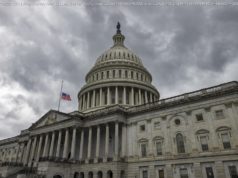Array
We break down why the White House isn’t sitting down with Republicans to find a debt limit deal yet. We’ll also look at a new low for union membership and big changes at a major streaming service.
But first, find out how gas stoves became part of the culture wars.
Welcome to On The Money, your nightly guide to everything affecting your bills, bank account and bottom line. For The Hill, we’re Sylvan Lane, Aris Folley and Karl Evers-Hillstrom. Someone forward you this newsletter? Why the White House won’t negotiate on debt ceiling
The White House is refusing to negotiate with Republicans on raising the debt ceiling, a risky position that Democrats think is a political winner, but that also reflects their scars from previous fights.
Treasury Secretary Janet Yellen on Thursday notified congressional leaders that her office will begin to implement “extraordinary measures” to keep the U.S. government from defaulting on its debt.
Taking the position that you won’t negotiate will allow Republicans to argue that a refusal by the White House to discuss spending cuts amid a rising debt crisis means President Biden is not acting in the public’s interest.
But White House officials and Democrats believe they have much more leverage if they do not negotiate.
Here’s what’s behind the White House strategy from The Hill’s Alex Gangitano and Brett Samuels.
There’s a precedent: Congress has voted to increase the debt limit more than a dozen times in the last 25 years — including three times during the Trump administration.
Negotiations have led to pain: Then-President Obama did negotiate with House Republicans over raising the debt ceiling and cutting spending in 2011.






